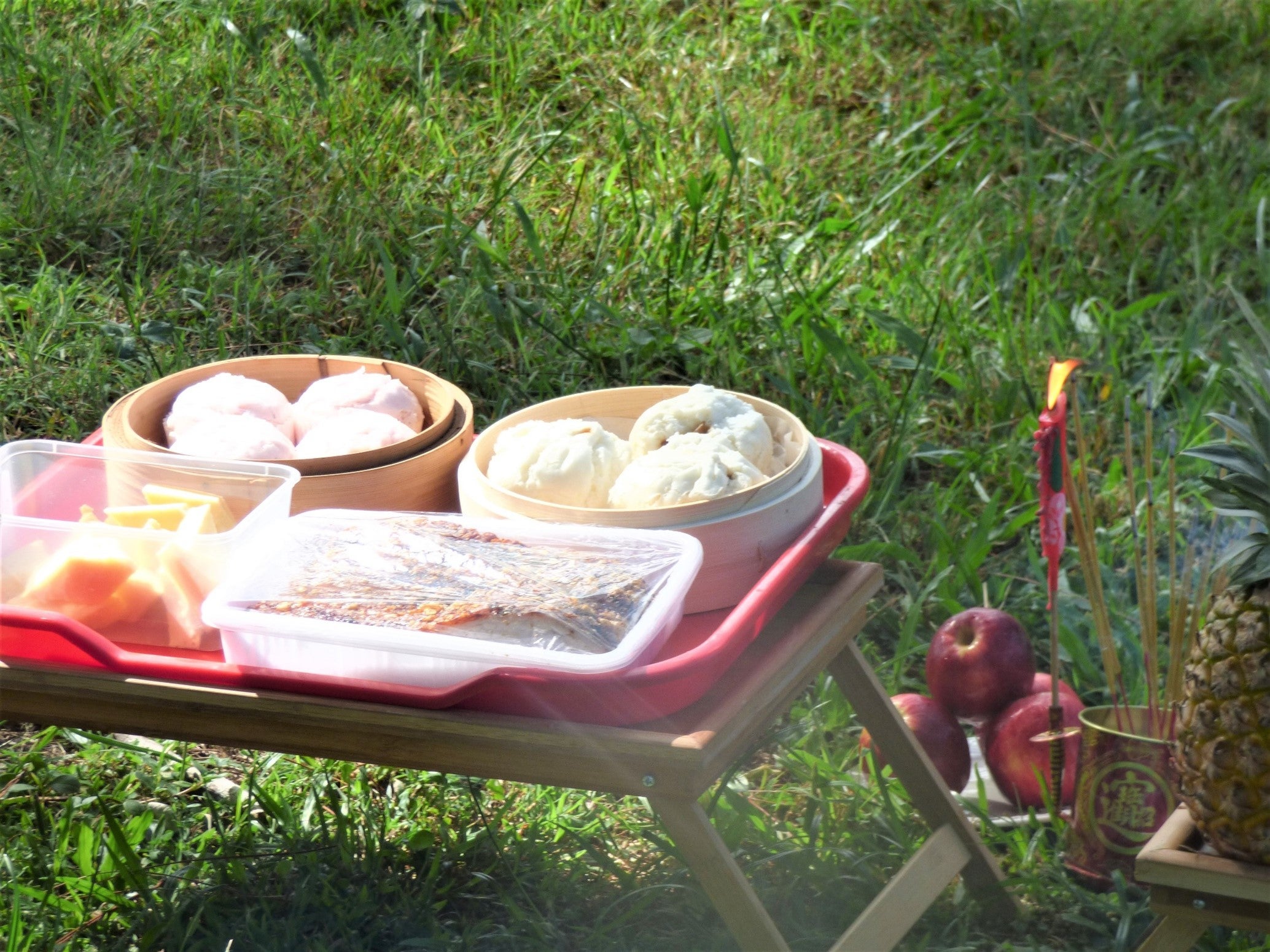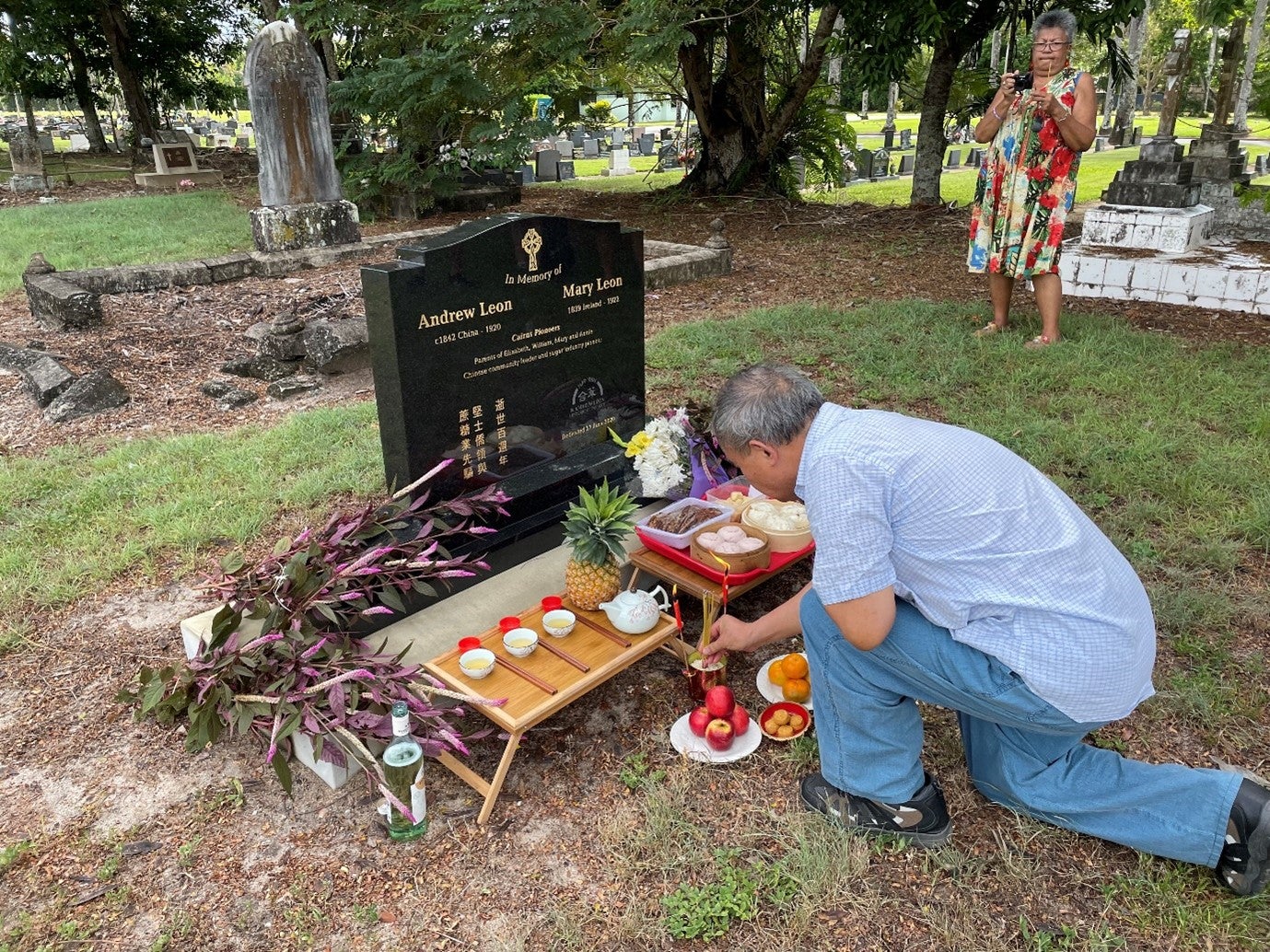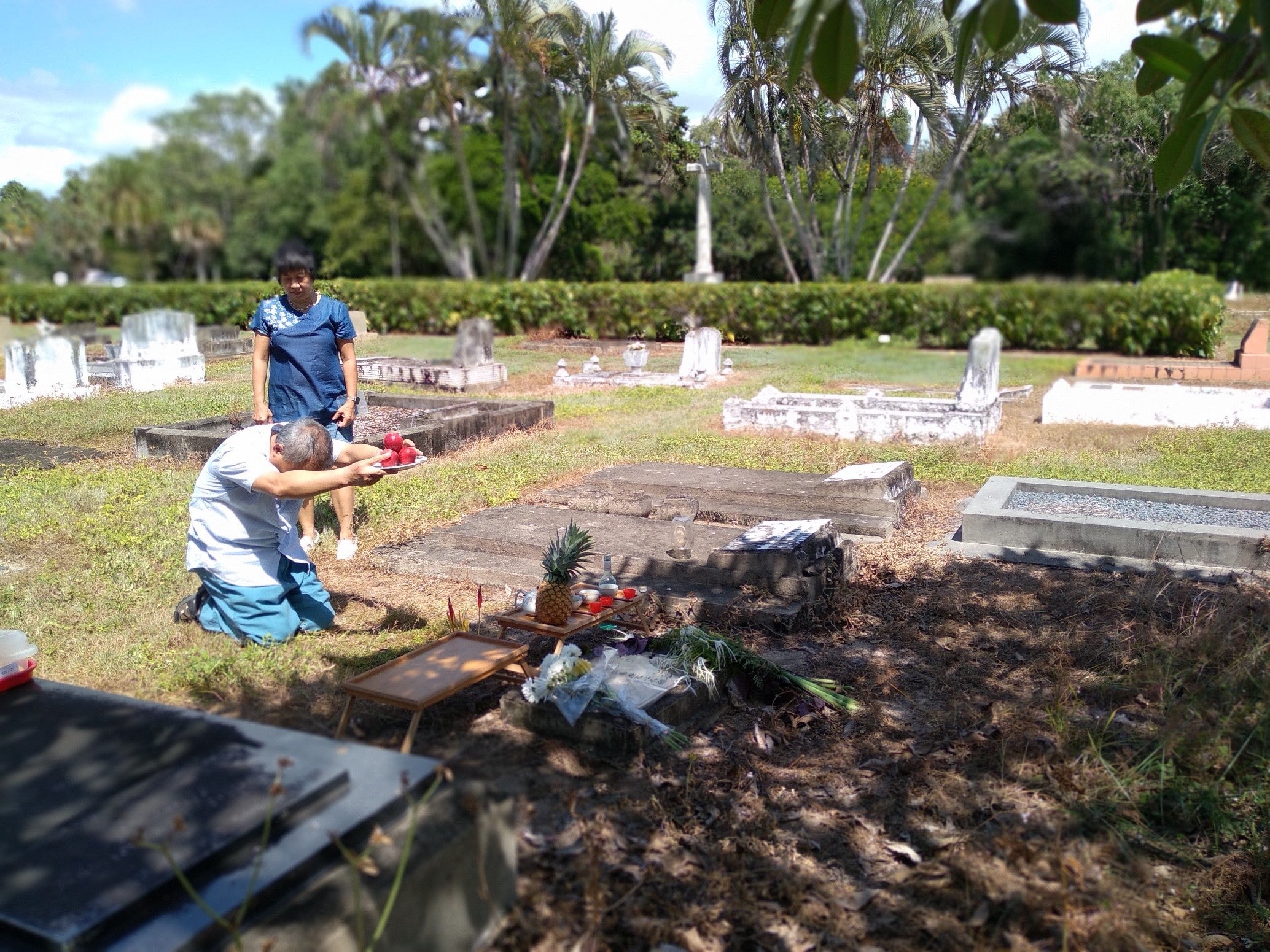
Ching Ming Festival in Cairns
On April 10, 2022, members of the Cairns Chinese community gathered at two of the oldest surviving cemeteries to take part in a Ching Ming (Qingming) ceremony to pay tribute to the city's earliest Chinese settlers. The event was organised by the Cairns and District Chinese Association (CADCAI). In particular, the attendees paid tribute to two Zhongshan men buried at the Cairns Cemetery.
The first was Andrew LEON (c1842—1920). Leon was a Cairns pioneer who had arrived in 1876 not long after the port was opened and remained in Cairns until he died in 1920. Leon came to prominence during the Hap Wah (合華) era and, according to Julia Volkmar, was not only the manager but the driver of the sugar enterprise in Cairns. Although researchers have been unable to confirm his Chinese name and origin, it is believed he is from Chung Shan as he was associated with the "Chung Shan Temple" (中山廟), a prominent establishment located in a once thriving "Cairns Chinatown" on Sachs Street (present-day Grafton Street). Although, like the old Chinatown, the temple (otherwise known as “Lit Sung Goong” 列聖宮) has not survived, but its artefacts have luckily been salvaged. They are now part of an internationally significant collection and in the care of CADCAI. In June 2020, a commemorative bilingual headstone was installed on a previously unmarked grave site as a product of the meticulous research work of Julia Volkmar OAM, a century after Andrew Leon's death. This was a permanent acknowledgment to Leon’s contributions to the then embryonic town of Cairns.

Danny Xiao at Cairns Cemetery offering incense at Andrew and Mary Leon’s gravesites. Photo by CHAN Lai Chu, 2022.
The second is JANG Tim (d.1952). Not unlike many Chinese Australians who return to explore their Chinese ancestral roots, in 2015 Jang Tim's granddaughter ZHENG Si-Hang (鄭思航) and her husband GAO Weiteng (高偉騰), came from their Zhongshan home in Guangdong, to search for the resting place of their forebear Jang Tim (鄭添) in Queensland. With the help of Ms. CHAN Lai Chu and the local Chinese community in Cairns, the couple successfully located the resting place of Jang Tim and then a plaque in Chinese was installed on the unmarked grave. Ever since, whenever Ms Chan drives past the cemetery, she pays tribute to this ordinary market gardener. The narrative of Jang Tim’s life, according to her, is one of a frugal Chinese immigrant in Australia in order to make extraordinary sacrifices to improve his family prospects in China.

Danny Xiao and Ms. Chan Lai Chu paying tribute to Jang Tim at Cairns Cemetery. Photo by Christopher Cheng, 2022.
The year 2022 marked the first occasion where a public tribute could be held at the above grave sites. Because of the global Covid-19 pandemic, this commemoration has been put on hold for a while, the organiser Mary Low said.
Historian Sandi Robb pointed out the significance of the occasion, stating that Ching Ming was unlikely to have been popular a century ago. Many of the early Chinese came to north Queensland alone and were expecting to return to their village in China. Plus, during the decades under the White Australia policy, Ching Ming was unlikely practised due to a lack of cultural acceptance toward Chinese customs.
As a communal event, this year's Ching Ming in Cairns may be the first of its kind. Rather than being a new tradition, however, it was a continuation of or reinvention of an ancient one. Importantly, the organizer Mary Low remarked that it is to remind the next generation of Chinese born in Cairns of the contributions of the elders and ancestors to the community. An elderly Shanghai immigrant Danny Xiao (肖得義) who facilitated the rituals on behalf of the community shared a similar sentiment. Xiao elaborated that the cultural practice and tradition of respecting one ancestors’ provided descendants with a solid foundation to forge a successful future.
Other useful references
https://www.cadcai.org.au/2020/07/07/remembering-andrew-leon-1840-1920/
